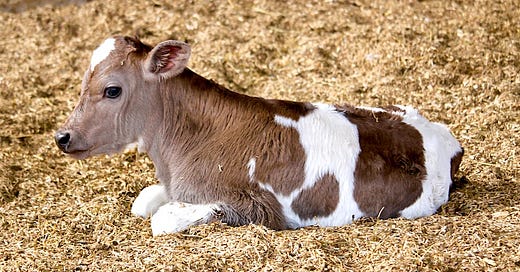How Living Capital Can Save Us from an Unstable Banking System
What the natural world can teach us about currency
In last week’s episode of the Nourishing Liberty podcast, my cohost, Rachel, and I discussed the collapse we are seeing in the banking industry and what it means to us as regular people.
The following article is extrapolated from our conversation.
Rachel recently wrote a piece about the banking system’s current instability. In this piece she discusses the reactions the banking system has to the economic crisis and what that means for ordinary Americans.
In our discussion, I covered the importance of diversifying our concept of capital and understanding value.
When we talk about food and food systems and food production, it's key to think about diversity. In the same way, it is important to view our financial systems as more than just the money in circulation. When it comes to the microcosm of a family or person, what do we need to think about when it seems that financial crisis is looming? Wether the financial crisis is hyper inflation or something else, how can we individually prepare?
Permaculture principles have a way of explaining capital in broader terms than simply the money we exchange.
The 8 forms of capital as a foundational idea
Permaculture introduces the idea of 8 forms of capital. While this is a framework that invites further discussion, I am focusing on Living Capital for this discussion.
Living capital is vital for our lives, especially when we consider our food systems. Living capital includes your trees–especially food bearing trees, but also trees that help with your particular ecosystemI–your animals, and the water that flows or pools on your land. Living capital is the vitality of your ecosystem. It is that which naturally regenerates. It is seeds and soil. It is the fish in our ponds and the health of our rivers.
For just a moment, think about this idea in terms of ancient civilizations. This is how humans lived. They had animals that kept reproducing. They tended to natural systems, saved seeds, planted, and used what the land gave them. It was a natural system. It was a natural understanding of value.
This form of capital was self-duplicating. A cow would have a calf every year. A goat would have a kid every year. Chickens would “go broody” and hatch out their own eggs. Wildlife was available for hunting, waters were available for fishing.
This relationship with nature and our ecosystems was–and is–a way to cultivate food security.
Often, civilizations, tribes, or even families within societies could live off natural resources without necessarily engaging in exchange of financial currency–what we call money.
Clearly, living capital remains important.
What does living capital mean for us today?
Most of us do not think about fruit trees, gardens, chickens and cows as “capital.” But they are. By considering our natural systems in a new framework, we can begin to understand that transforming financial currency (dollars, etc) to trees, chickens, and seeds, is a way to both diversify and preserve financial capital which has no inherent value.
As Alanis Obomsawin “an Abenaki from the Odanak reserve” reminds us
“Canada, the most affluent of countries, operates on a depletion economy which leaves destruction in its wake. Your people are driven by a terrible sense of deficiency. When the last tree is cut, the last fish is caught, and the last river is polluted; when to breathe the air is sickening, you will realize, too late, that wealth is not in bank accounts and that you can’t eat money.”
What can we do with this information and this idea today in our modern economies and cultures?
We can use an unstable financial currency to purchase that which gives and sustains life: seeds, trees, soil, animals. We can use it to repair our ecosystems, with the understanding that this repair is the only way to continue into the future. That we cannot keep going without repair and it takes significant investment–both in time and capital.
This spring is yours. What will you do with it?






Liz and Rachel,
Thanks so much for sharing your thoughts on this critical issue. I love the way you related the banking crisis to permaculture.
We have advanced so far in our modern society, but have not learned the lessons of those who came before us many years before us.
I remember as a little kid listening in wonderment to my day, who was born in 1908, about how his father taught the family how to preserve food before the introduction of modern refrigeration. Of course there were the canning process of using the Mason jars, but how many have heard of food cellars? These were large outdoor holes (cellars), dug into the soil to the right depth, and fruit, vegetables, etc., were stored here. Steps were made during the digging process, and a special covering of boards, covered with soil & straw, completed this unique natural refrigeration system.
I appreciate your articles. The are so informative and gives one an alternative prospective that the quick fix answers we find in mainstream media.
Please keep up the fantastic job you’re doing.
Sincerely,
Bob Gaines